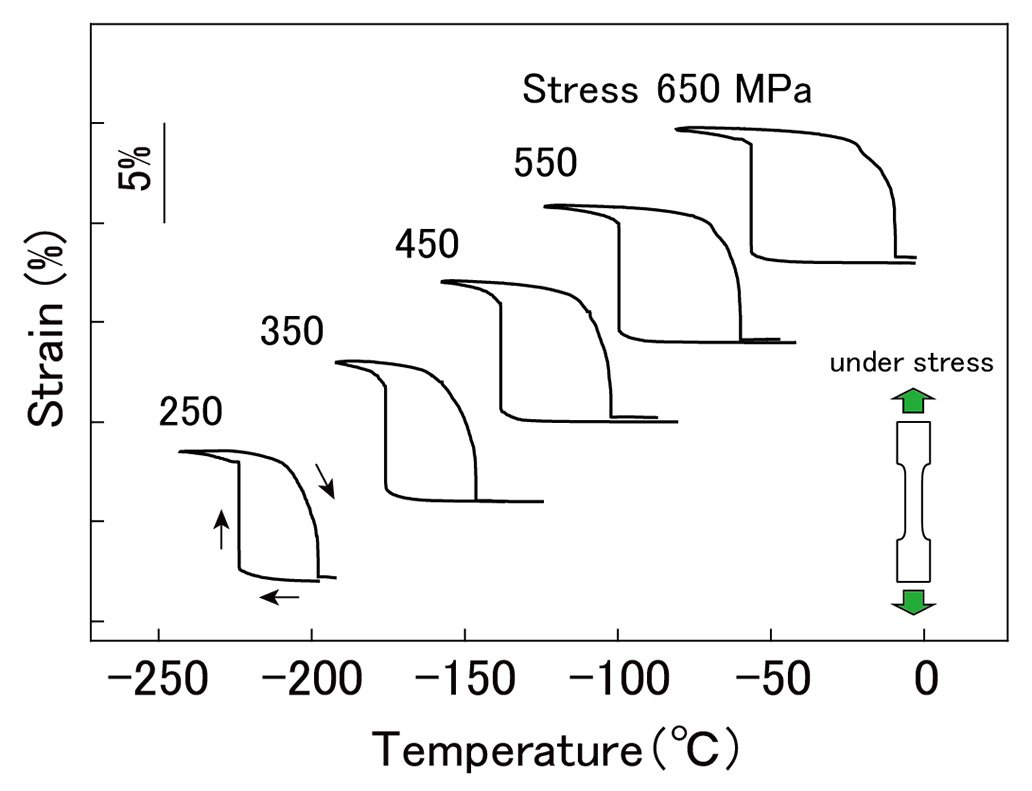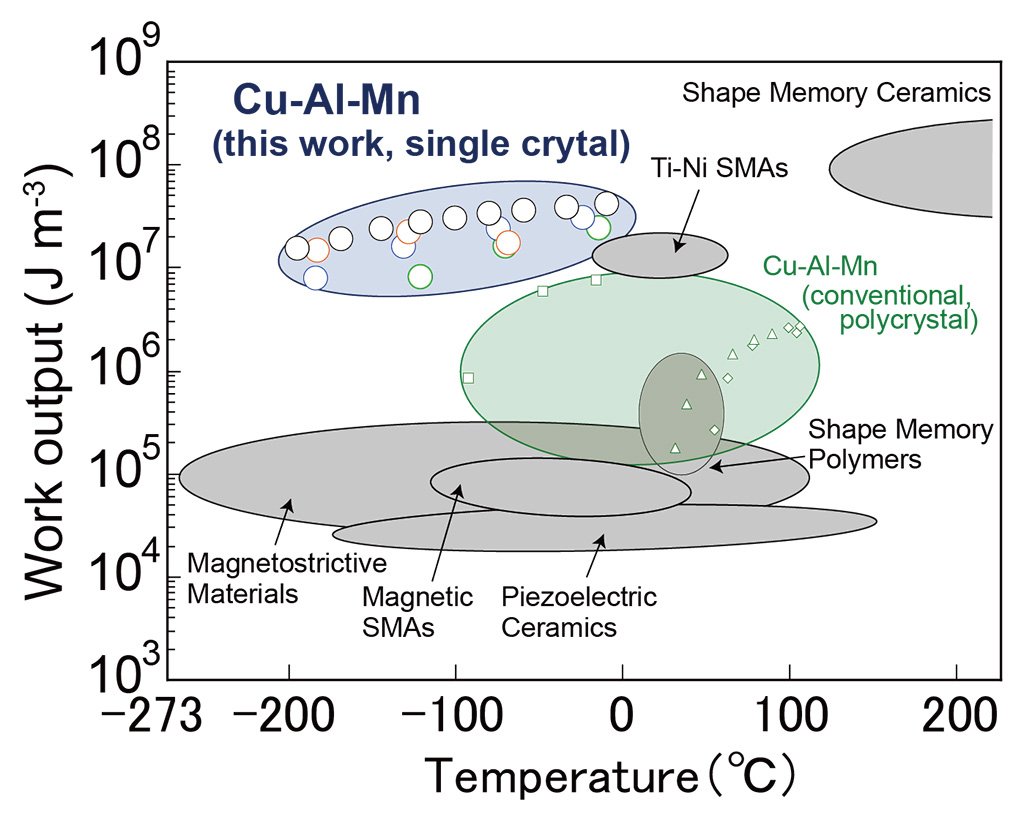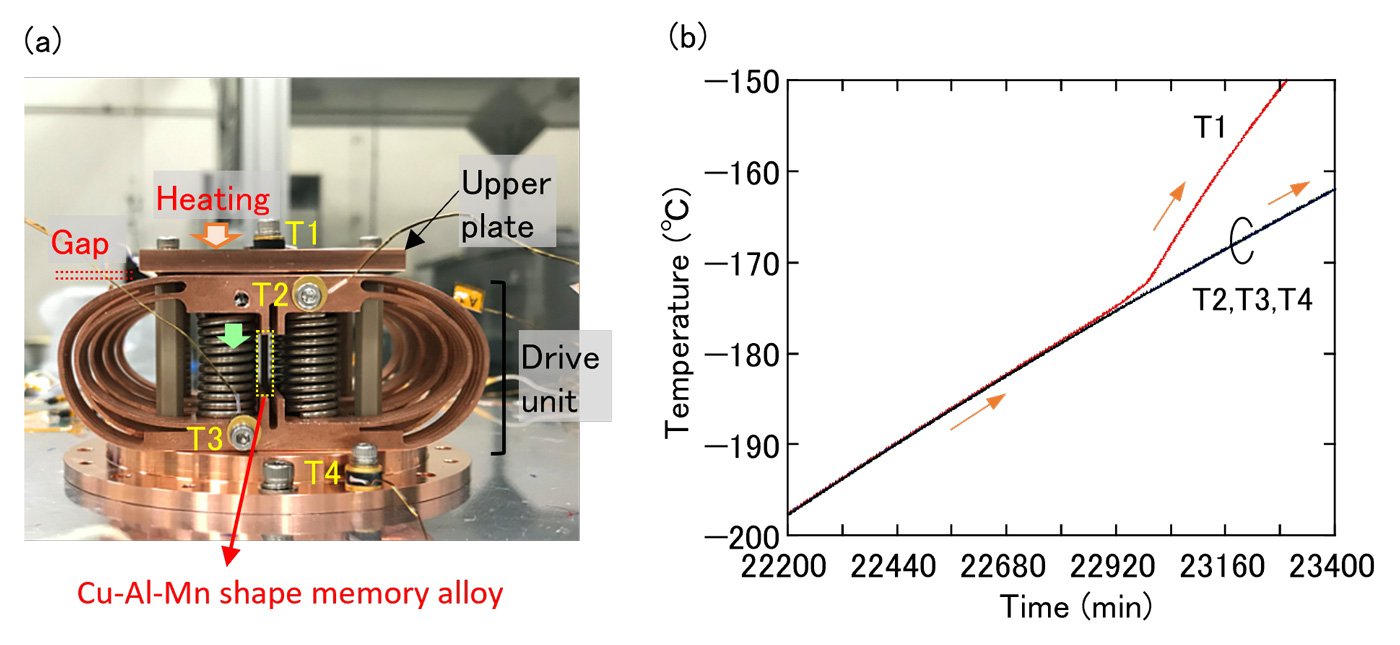A study led by Tohoku University, Iwate University, The Japan Aerospace Exploration Agency (JAXA), National Astronomical Observation of Japan, Tokyo City University, and Kyoto University developed a novel copper-based alloy that exhibits a special shape memory effect at temperatures as low as -200°C. Shape memory alloys can be deformed into different shapes when cold, but will revert back to their original shape when heated (as if "remembering" their default state, like memory foam). This exciting new alloy has the potential to be used for space equipment and hydrogen-related technologies, where challenging, cold environments below -100°C are the norm.

Previously studied shape memory alloys using Ni-Ti could not maintain their shape memory ability below -20°C, despite their otherwise practical characteristics. In contrast, the known existing shape memory alloys that can actually operate below -100°C aren't suitable for practical implementation. This study met the challenge of finding the first functional actuator material capable of large work output at temperatures below -100°C. Actuators are components that turn some sort of input into mechanical energy (movement). They can be found not only in machines bound for outer space, but in everyday devices all around us.
The team of researchers prototyped a mechanical heat switch using a new alloy (Cu-Al-Mn) as an actuator. This switch was shown to operate effectively at -170°C, controlling heat transfer by switching between contact and non-contact states based on temperature changes. The operating temperature of the alloy can be adjusted by modifying its composition.
"We were very happy when we saw that it worked at -170°C," remarks Toshihiro Omori (Tohoku University), "Other shape memory alloys simply can't do this."

The Cu-Al-Mn alloy is the first actuator material capable of large output at temperatures below -100°C. This development paves the way for the realization of high-performance actuators that can operate even under cryogenic conditions, which could not be realized before. Potential applications include a reliable mechanical heat switch for cooling system in space telescopes. The simplicity and compactness of such mechanical heat switches make them a crucial technology for future space missions and for advancing carbon-neutral initiatives like hydrogen transportation and storage.

- Publication Details:
Title: Shape memory alloys for cryogenic actuators
Authors: Shunsuke Sato, Hirobumi Tobe, Kenichiro Sawada, Chihiro Tokoku, Takao Nakagawa, Eiichi Sato, Yoshikazu Araki, Sheng Xu, Xiao Xu, Toshihiro Omori, Ryosuke Kainuma
Journal: Communications Engineering






